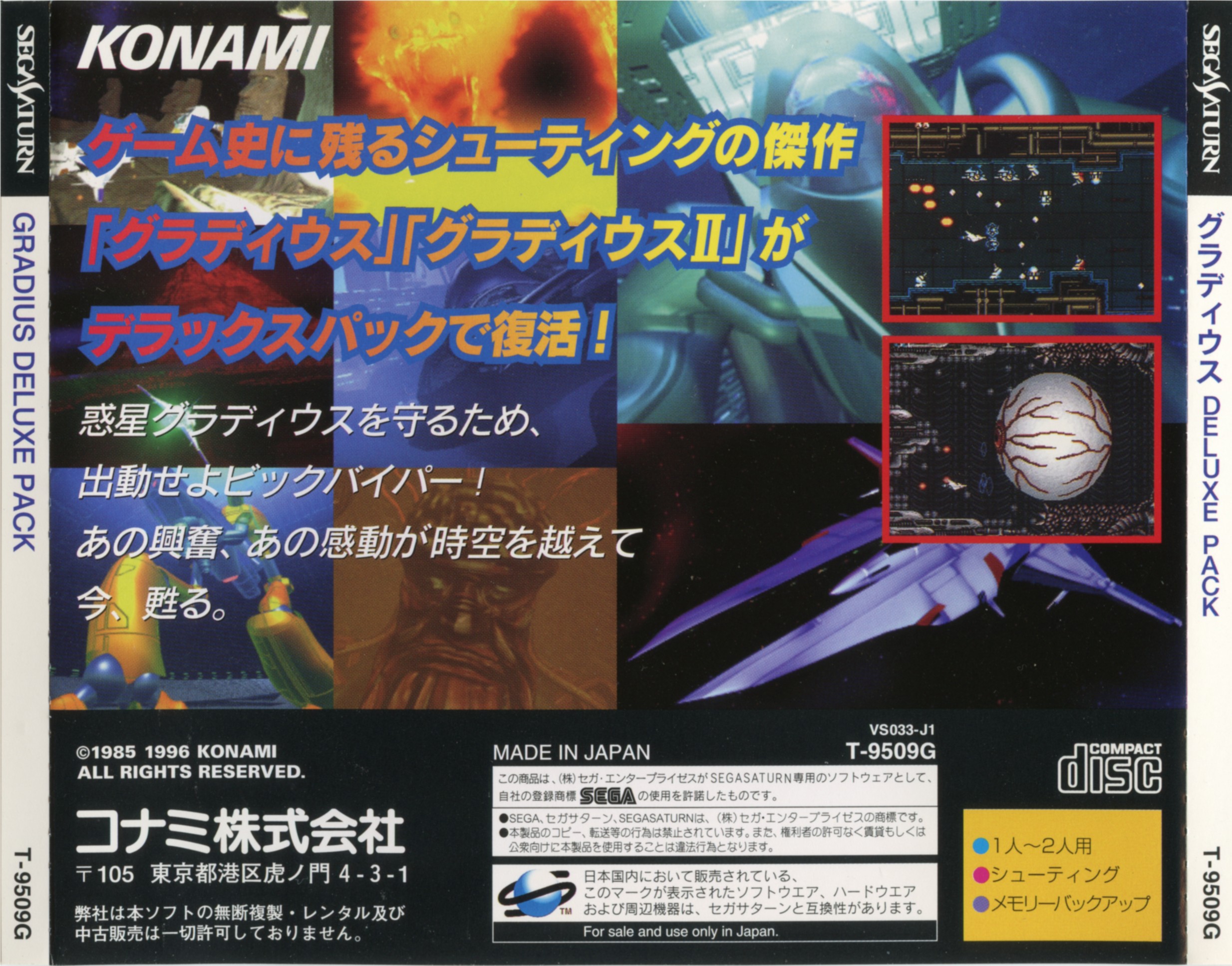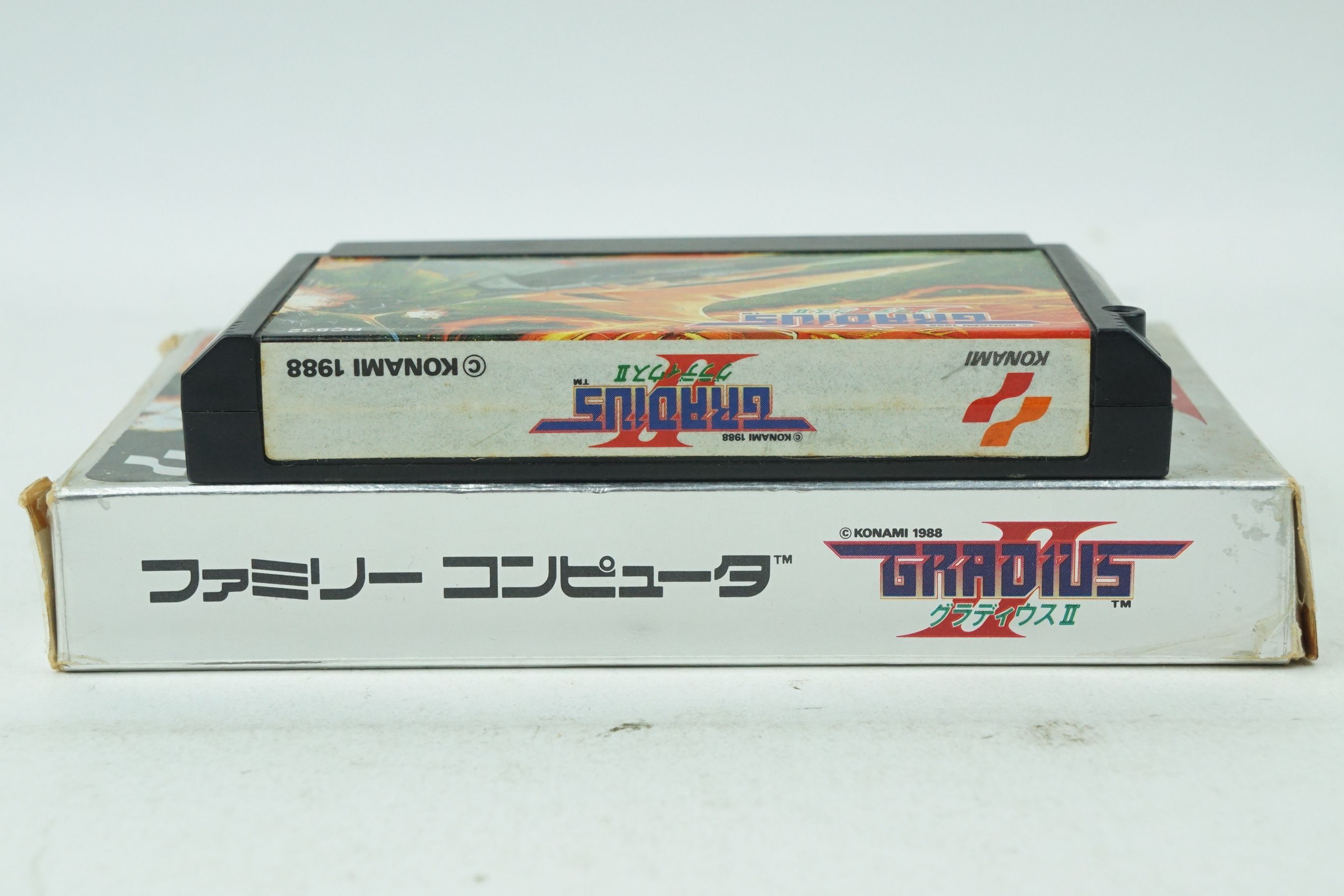

Because the IPS file is too clumsy for many MSX rom hacking needs, like:ġ) Extending ROMs beyond their original sizeĢ) Containing multiple different patches inside one fileģ) Having patches that can be asked for the user if they're to be applied :)Īlso, contact your preferred MSX emulator developer to add support for autoloading XPCs the same way ExecROM does.
#Gradius 2 box Patch
It would be exactly the same if it was an IPS file.Īnd I can assure you that it was much much harder to create this patch than the minimal work someone needs to apply it. Please don't blame "the process is hard" on the XPC file. So the steps to patch the file for an emulator would be:ġ) Google for "dummy file creator", get one tool for that.Ģ) Create an 8KB filled dummy file filled with FFhģ) Open a shell on Windows, type: copy /b NEMESIS2.ROM + dummy8KB.rom GRAD2ENH.ROMĤ) type: xpcapply GRAD2ENH.ROM GRADIUS2.XPC You can fool such emulators by attaching an 8KB dummy file to the end of original ROM before patching. Otherwise it will not run the ROM correctly. The problem is: Most emulators require the game to have an exact size (multiple of the page size of the megarom in question) to execute a ROM. You can apply the patch just as you do with an IPS patcher. Goto ExecROM SourceForge page and download XPCtools. To run the game just type ExecROM GRADIUS2 at the MSX-DOS prompt.Ģ) Apply the patch to the ROM. ExecROM will detect this and will autoload the patch.


Just put the ROM and the XPC patch on the same directory (of a disk containing MSX-DOS, off course) with the same filename (ie: GRADIUS2.ROM and GRADIUS2.XPC). There are two easy ways to use the XPC patch:ġ) Easier: ExecROM. Relevant link: Gradius 2 enhancement patch In addition, sd_snatcher released a new version of the Salamander DynamicVsync patch, that includes some new optimizations to get even better speed improvements on slower machines. It will not only implement the DynamicVsync (for MSX1 & MSX2), many speed optimizations and some tricks: it also includes a much-desired feature: SmoothScroll for MSX2+ and MSX Turbo-R! This new patch is not just the same as previous ones. As a result, the game drops frames constantly, running noticeably slower than its predecessor: Gradius (a.k.a.
#Gradius 2 box full
Also, the game is far too CPU-intensive for a standard 3.57MHz Z80A to sustain a full frame rate. As with many other Konami megarom titles for MSX, it suffered from the bug in the timing routine that lets it run at twice its normal speed if the processor is fast enough. Nemesis 2) is a spin-off story of the Gradius series, developed specifically for the MSX and later ported to X68000 and PSP under the title "Nemesis 90 Kai".


 0 kommentar(er)
0 kommentar(er)
